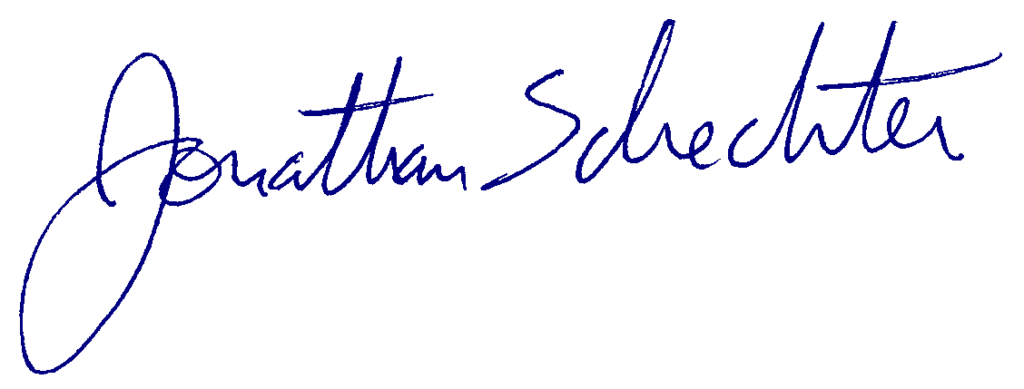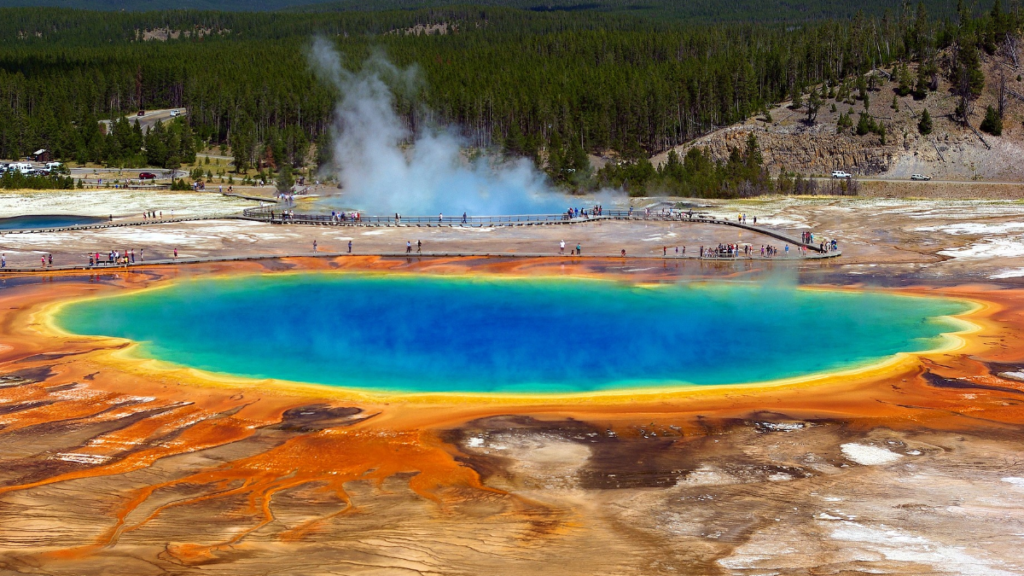Hello, and happy Summer Solstice!
Welcome to the June 20, 2020 edition of the CoThrive newsletter.
This newsletter’s purpose is to explore the concept of co-thriving; i.e., the state in which a human community and the ecosystem in which it lies simultaneously thrive.
In this, CoThrive is both an extension of the column I wrote for many years in the Jackson Hole News&Guide, and a refinement: an extension because the column ended two years ago when I became a candidate for the Jackson Town Council; a refinement because I want to use the newsletter not only to explore the dynamics of the Jackson Hole region, but also what it means to co-thrive – or whether co-thriving is even possible.
The first edition of CoThrive came out in January, and my plan was to publish it either monthly or, if things broke right, semi-monthly. As the saying goes, though, life got in the way of plans, and so this is the first edition in far too long.
On the positive side, in writing this piece I ended up with so much material that I’m splitting it into two editions. Both editions focus on the human side of the co-thrive equation by using looking at how COVID-19 is affecting Jackson Hole”s economy. Below I look at visitation during the first four weeks Yellowstone National Park was open (May 18-June 15). The June 25 edition (my son’s birthday – woo woo!) will complement the visitor data by looking at taxable sales during the month of April, the first full month of COVID-19’s effects.
- Yellowstone Visitation
- Data
- Concerns
- The challenge
- One final thought
The combined big take-away? This summer, Jackson Hole’s economy may end up doing better than we feared.
Thanks for reading, and I look forward to hearing your thoughts, reactions, and comments.

Jonathan Schechter
Executive Director

Yellowstone Visitation
Because of COVID-19, both Grand Teton and Yellowstone national parks opened late this summer, first letting visitors through their gates on Monday, May 18. On that date, Grand Teton opened all of its gates, while Yellowstone opened its two Wyoming gates: South (the access point from Jackson Hole) and East (Cody).
In normal times, both parks provide monthly visitor counts based on vehicle traffic. Because US 89/191 runs through the middle of Grand Teton National Park, though, that park needs to coordinate its traffic counts with those of Wyoming”s Department of Transportation. Yellowstone doesn”t have that complication, and this year the park has been kind enough to provide daily vehicle counts for each of its five gates (the three Montana gates – Northeast (Cooke City), North (Gardiner); and West (West Yellowstone) – opened on Monday, June 1).
Data
Figure 1 compares 2019 and 2020 total vehicle counts for the four weeks between May 18 and June 14. As it shows, in 2020 the number of vehicles entering Yellowstone from Jackson Hole was down 30 percent, and the park”s overall traffic count was down 37 percent.

Figure 2 breaks the overall data into four one-week periods, revealing a much different story.
During Yellowstone”s first four weeks of summer 2020, overall visitation was down at least 30 percent each week, and in the third week was down 46 percent.
The South Gate followed a similar pattern during the first three weeks, with each week”s vehicle count down around 40 percent. Things really changed in the fourth week, though, with 2020’s vehicle count only 10 percent below 2019’s.

Dig a little deeper, and for the five days between June 11-15 (the most recent five days for which I have data), 2020’s South Gate traffic was essentially the same as 2019’s. Save for the lightly-used Northeast Gate, this wasn”t true for the three other major gates, all of which were down 20%-30%.
To me, this seems significant because of recent talk that”town seems busy.” These recent South Gate vehicle counts support that impression: For at least a handful of days in mid-June, Jackson Hole”s 2020 summer visitation has been similar to 2019’s. (Figure 3)


Concerns
If visitation numbers do stay high, it will create two concerns.
The first is logistical. As in, if our visitor counts end up being surprisingly high, where will all those people sleep and eat? Roughly 2/3 of the hotel rooms in both Yellowstone and Grand Teton won”t open this season, and hotels outside of the park aren’t necessarily operating at full capacity. That”s certainly the case with restaurants, most of which have reduced their dining room capacities by half.
The point is that, compared to past summers, Jackson Hole has far less capacity to handle visitors. If visitation numbers aren’t correspondingly lower, the result will be a mess – too many people with too few places to stay and eat. Yet to the best of my knowledge, no effort has been made to figure out what our restricted visitor carrying capacity might be, much less how to align that reduced capacity with efforts promoting the region.
The second concern is health-related.
To state the obvious, thanks to COVID-19 across the country everyone is going stir-crazy. Throw in the onset of summer”s”it”s so nice outside” weather, and even the most disciplined person is itching to break away from the soul-crushing sameness of the COVID-19 lockdown.
Combine that stir-craziness with nationwide efforts to re-open the economy, and travel is picking up. Not air travel, but driving to places within easy – or in some cases not-so-easy – distance. Like Jackson Hole and, at its northern end, Yellowstone”s South Gate.
Pushing this thinking a bit further, who is going to be most likely to travel to a place like Jackson Hole? Answer: Folks less-concerned about COVID-19. Folks less-concerned about contracting it. Spreading it. Maybe even believing it exists. So when such folks get to a place like the Tetons, they”ll also be less-concerned about things like wearing masks and practicing social distancing.
Complicating matters further is that these folks are not only on vacation, but are likely on their first vacation since the COVID-19-related shutdowns. As a result, this will be their first opportunity to release all the pressure built up during months of self-isolation. And since they”ll likely hundreds of miles from home, they”ll also likely be several hundred miles away from the implicit COVID-related behavioral strictures a community imposes upon its residents (e.g., if someone you know gives you a dirty look because you”re not wearing a mask, it”s far more powerful than if that look comes from a stranger in a town you’re visiting).
Add to all this the dis-inhibiting qualities of alcohol, and it”s not hard to imagine an uptick in Jackson Hole”s tourism resulting in an uptick in Jackson Hole”s COVID-19 cases. Like, for instance, the rise we”ve seen from zero active cases on June 9 to nine on June 19.
Is that a lot? No. But the real concern is the same one that led to March”s clampdown: If the number of COVID-19 cases rises rapidly, it has the potential to overwhelm Jackson Hole’s healthcare infrastructure.
Perhaps this is unlikely. Hopefully it’s unlikely. The unfortunate reality, though, is that if you were going to design a place ripe for becoming a COVID-19 hotspot, you”d be hard-pressed to do better than Jackson Hole and our industrial tourism model.
What do I mean by”industrial tourism”? Just this. Especially in summer, Jackson Hole”s tourism industry depends on quantity, specifically on bringing thousands of people into our community every day, folks from all over the region, nation, and world. Once here, we push them into close proximity in hotels, restaurants, bars, and the like, then send them on their way a day or two later.
This industrial-scale process has worked extraordinarily well for Jackson Hole for many, many decades. In the COVID-19 era, though, such a process makes it essentially impossible to do widespread testing and contact tracing, the two keys to keeping coronavirus under control.

The challenge
Which creates an immense, incredibly thorny challenge. If we fully embrace our standard approach to summer tourism, we”ll leave ourselves and our visitors very vulnerable to a COVID-19 spike, catalyzed by tourists who are asymptomatic disease carriers. If we fully embrace health precautions, though, then our quantity-driven business model falls apart.
Which is why the most recent South Gate visitation data are so eye-catching, for they suggest we could be headed for a summer hallmarked by a worst-of-both-worlds hybrid: Large numbers of tourists plus insufficient tourism infrastructure leading to a lousy guest experience plus a second wave of coronavirus cases.
Through efforts like the Travel and Tourism Board”s Clean, Careful, Connected campaign, our community is trying very hard to strike the right balance between commerce and public health. The vexing problem, though, is that we have no clear idea how to address this unprecedented situation – there is no roadmap, no recipe, no blueprint to follow for what to do or how to do it. So we try, we wait, we gather and evaluate the best data we can find and act accordingly. And then we hope for the best.
One final thought
Everyone who loves Jackson Hole owes a huge debt of gratitude to those involved in creating the community”s response to COVID-19. Public health officials, business and non-profit leaders, government electeds and staff, and concerned citizens have all made Herculean efforts to address the manifold challenges COVID-19 has presented. As a result, the entire community can take great pride in knowing we”ve likely done everything we can possibly do.
None of which may matter.
This is because ultimately, the only thing that will matter is one thing we can”t control: whether potential tourists feel safe enough to travel.
Like a sense of humor or falling in love, feeling safe is visceral. There is no right or wrong – either you feel safe or you don”t. Whatever you feel is valid, and no matter what I say, I can”t change your mind because it”s not about your mind.
But your mind takes in information. For example, as I write this, Wyoming and every state surrounding us is experiencing a growth in confirmed COVID-19 cases. As is every state in the Mountain and Pacific time zones save New Mexico. Further, the Washington Post reports that confirmed cases are growing nationwide, and”The World Health Organization warned Friday that ‘the world is in a new and dangerous phase’ as the global pandemic accelerates.”
Will that matter to potential visitors to our region? Who knows? And the only way we’ll know is if they come. Or don”t.
What we do know is this, though. We”re living in a time of not just uncertainty, but fear. For some, it”s fear for their health. For others, it”s fear for their livelihoods. Or their businesses. Or how the pressures of the last few months are affecting their loved ones. Or themselves. Or some combination of all this and more.
All of which is difficult enough. Making things far worse has been the inexcusable killing of George Floyd and the spotlight it’s shone on racism, inequality, and so many other related issues.
We need to acknowledge and address these issues. These stresses. These fears. All are real, all are profound. And all affect us – as individuals, a community, a people – in ways we we don’t, and maybe won’t ever, fully understand.
Similarly, we have no clear understanding of how to address these manifold and interwoven issues – here again, there’s no roadmap, recipe, or blueprint. As we muddle our way along, though, in no small measure our success will depend on our ability to be empathetic – towards ourselves, our community, our world.
Or, as Mickey Hart, drummer for the Grateful Dead put it in the last words spoken at the Dead”s final show in Chicago on July 5, 2015:
“The feeling we have here –
remember it, take it home and do some good with it.
Hug your husband. Wife. Kids. I”ll leave you with this: Please, be kind.”
